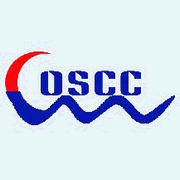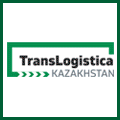2012-04-26
Scania will deliver 231 city buses to the Chilean capital Santiago. With this sale, Scania begins operation in the Transantiago integrated public transport system, connecting bus lines and the metro network. The vehicles will begin to run in September and will be operated by Alsacia Express, which has extensive experience in operating buses in different integrated public transport systems throughout Latin America.
Scania will deliver a comprehensive package of products and services to the bus operator, including operational leasing of the vehicles by its Chilean financing company.
“Besides providing training for employees and bus management, including maintenance and repair, the package also includes Scania’s own GPRS monitoring system”, says Silvio Munhoz, Managing Director of Scania Chile.
With 230 hp engines, the low-floor model K 230 4X2 buses meet the European Euro 5 emission standard and the even stricter EEV standard (Enhanced Environmentally Friendly Vehicles). The Scania bus chassis will be manufactured by the Brazilian bus bodybuilder Marcopolo.
Launched in 2007, the Transantiago integrated public transport system connects the entire city bus fleet of the Chilean capital and more than 100 kilometers of the metro network. The system comprises local routes, with buses operating within a single zone, and routes that connect different areas of the city.
Scania
Out-of-the-box action destined to create major leap forward in safety
APM Terminals takes an unusual organizational step to further improve its safety culture: The Hague-based global port and inland operator, often highlighted and awarded as safety leader in the industry, has decided to assign one of its most experienced and trusted executives as an internal Safety Activist.
This organizational step, previously unseen in the port business, is described by APM Terminals’ CEO Kim Fejfer as a strategic move to achieve a major leap forward in safety. “The sole purpose of this new and unique type of executive assignment is to drive the company’s safety culture forward to a new degree of excellence. And we have found the best person possible for this task,” says Kim Fejfer.
The new special Safety Activist assignment has been awarded to Martin Poulsen, for the past six years CEO of APM Terminals’ Europe region. Mr. Poulsen is a true veteran of the port business, having been with APM Terminals since the company was established as an individual entity in 2001. He is broadly respected for his business experience, leadership excellence and vast insight in all aspects of operations.
Martin Poulsen will focus on mobilizing the global APM Terminals organization to address the constant safety challenges in the port operations. The work in global ports is often complex, and danger constantly prevails when large-scale machinery mix with dock labor and external trucks. Working in heights, extremely heavy lifts and the danger of falling objects adds to the risk. The recently issued Sustainability Report 2011 from APM Terminals openly stated that despite progress in the overall safety performance, APM Terminals has yet to achieve a significant reduction in fatal accidents.
“Our ambition at this point is to eradicate fatalities and severe incidents. What we need is the mindset of an activist, fighting for a just cause. And Martin Poulsen is the person to fully mobilize the organization in the daily battle against dangers in the workplace,” says Kim Fejfer.
The new role as Safety Activist is not a traditional executive job, but a temporary strategic assignment of a complex nature - and therefore best suited for an experienced executive with license to investigate and improve. APM Terminals will still uphold a permanent safety organization, but part of Mr. Poulsen’s internal activist duties will be to work closely with - and potentially develop - the existing safety team. After the assignment is completed he is expected to return to a high-level business line role.
Martin Poulsen himself states that the task of progressing safety culture and performance is “probably the most important challenge at this point in time in the port industry.
For my entire career I have been privileged to be involved in some of the most important areas of our business – growing the business substantially through business development as well as significantly improving day-to-day operations. Right now, I am honored and happy to offer my experience and full attention to the most important thing you can strive for: That everybody returns home safe from work.”
APM Terminals
COSCO is to add a transpacific loop to its offering through the purchase of slots on the new China-US service to be launched by Wan Hai Lines and "K" Line (Calco-B) from Qingdao on May 7, reports Alphaliner.
The service will connect Qingdao, Shanghai and Ningbo to Long Beach, using five vessels with capacities of between 4,200 and 4,800 TEU. Three ships will be provided by "K" Line and two by Wan Hai.
This comes out of a recent agreement between Wan Hai and "K" Line to jointly operate a transpacific service to Long Beach (Calco-B). There is also the Calco-C (South East Asia-Japan Express) service, which rotates through Xiamen, Hong Kong, Shenzhen-Yantian, Shanghai, Long Beach, Oakland, Tokyo, Nagoya and back to Xiamen.
This is augmented by the SEA (South East Asia-Japan Express) service which rotates through Guangzhou-Nansha, Hong Kong, Shenzhen-Yantian, Xianmen, Long Beach and back to Guangzhou-Nansha.
Shipping Gazette - Daily Shipping News
TAIWAN-based Evergreen Line is to increase its shuttle service to Libya with a second 1,000-TEU vessel creating a weekly service from the end of the month.
The positive signs of recovery in Libya's economy and reconstruction projects has led Evergreen to introduce highly competitive transit times on its shuttle service which will call at Piraeus, Malta, Misurata, Benghazi and back to Piraeus.
Shipping Gazette - Daily Shipping News
THE Port of Yantai, in eastern Shandong province, posted an 8.6 per cent year on year increase in first quarter cargo volume to 48.29 million tonnes - surpassing volume the port achieved in all of 2005.
Yantai has developed a convenient, efficient logistics chain on the south bank of Bohai Sea, which has increased the throughput of bulk cargo. Meanwhile, the port enhanced its distribution with rail, road and waterway services to ease heavy pressure on warehouses and freight yard. The port's rail car cargo loading volume climbed 25.9 per cent year on year.
Shipping Gazette - Daily Shipping News
THE effect of piracy globally, off Somalia and increasingly in the waters of Benin and Nigeria, is a serious problem for seafarers who are constantly under threat, according to latest forum held in Manila.
The continuing threat of piracy on commercial shipping is of deep concern not only to seafarers and their families dealing with trauma over long periods of loved ones held hostage and post-traumatic stress for those captured, said members of The Seafarers Committee of the Asian Shipowners Forum.
"The situation continues to be a serious crisis, one that deeply affects the mental health of seafarers and their families as well as the carriage of world trade, said Seafarers Committee chairman Li Shanmin. "We demand, that the threat to our seafarers and their families is not forgotten, and that all possible is done to alleviate the situation."
Members of the ASF Seafarers Committee included the ASF secretary general and delegates from the shipowner associations in China, Chinese Taipei, Hong Kong, Japan, Korea and FASA, as represented by the Philippines, Singapore and Malaysia. During the meeting, the committee also discussed other issues of concern to Asian shipowners.
The Asian Shipowners' Forum is a voluntary organisation of the shipowner associations of Australia, China, Chinese Taipei, Hong Kong, India, Japan, Korea and the Federation of ASEAN Shipowners' Associations comprising shipping associations of ASEAN countries. It has been estimated that ASF owners and managers control and operate nearly 50 per cent of the world's cargo carrying fleet.
Shipping Gazette - Daily Shipping News
SAUDI ARABIA's the Red Sea Gateway Terminal (RSGT) the big container terminal at Jeddah Islamic Port, has been officially opened by Saudi Transport Minister Jabara Al-Seraisry.
The number of containers received by the Saudi ports rose from 5.3 million units in 2010 to 5.7 million in 2011. This reflected positively on their revenue as it rose from SAR2.97 (US$792 million) to SAR3.3 billion during the same period.
"Red Sea Gateway is first of its kind in Saudi ports," said Mr Al-Seraisry, adding that the terminal has a high degree of professionalism, thus increasing the port's capacity and creating more jobs.
The terminal is run by the Saudi Industrial Services group SISCO-Red Sea Gateway and is the first privately funded, build operate and transfer (BOT) port development agreement in Saudi Arabia.
Mr Al-Seraisry thanked King Abdullah for his support to the terminal project as well as for his judicious directives to strengthen the kingdom's transport sector.
Abdul Aziz Al-Tuwaijri, chairman of Saudi Ports Authority, highlighted the development achieved by Saudi ports during the past years, adding that their capacity rose from 373 million tons in 2010 to 413 million tons in 2011, reported the Saudi news agency Arab News.
Covering over 500,000 square metres, the Red Sea Gateway Terminal was built to set a benchmark advancing other port terminals around the region, exploiting approaches such as intelligent design and layout, cutting-edge technologies and value-added logistics and capabilities, said the report.
Jeddah is at a strategic location, which makes it an obvious choice for access into the regional markets. But before the arrival of RSGT, it lacked both the capacity and the capability to handle the operational demands of shipping lines, and of course the new mega vessels, said the report.
Shipping Gazette - Daily Shipping News
SINGAPORE's Permanent Secretary for the Ministry of Transport, Choi Shing Kwok, has urged the maritime industry to make changes to meet increasing demands for greater efficiency and safety, while minimising costs and environmental impact.
Speaking at the opening of the MARSIM conference and exhibition at the Singapore Polytechnic, the minister told the 300 participants that the industry was faced with an "increasingly complex environment".
The global nature of shipping, together with challenging market conditions, requires the industry to constantly innovate to meet increasing demands, he said.
"More specialised and sophisticated ships are being built and coming on stream. At the same time, shipping and port operations have also become more complex to accommodate the growth in vessel sizes," he said.
Mr Choi pointed out that there is also a greater demand for environmentally sustainable designs and practices to be used for ships and ports. These advancements have been made possible by the industry's strong technology base, including within the maritime simulation community. He said training and operational planning were two areas where maritime simulation has played a key role in advancing Singapore's maritime industry.
"Our seafarers operate in an increasingly challenging environment on board more sophisticated ships plying in busier waterways where the margins for error are getting smaller. Training needs have consequently become more specialised and demanding. Many aspiring seafarers have to cut their teeth on a wide range of vessel types before they are allowed to operate on board an ocean-going ship. This is where simulators can play a useful role by providing seafarers with realistic training in a risk-free environment and within shorter training times," he said.
Mr Choi also said that seasoned seafarers can also return to more advanced ship simulators to refresh and upgrade their skills. "As technology advances and regulations evolve, ship simulators can also be used by designers and crew to test new ship designs and operational procedures before they are brought to sea," he added.
Shipping Gazette - Daily Shipping News
AKTIV Aspac, the newest member of the Aktiv Group, together with Multi-Purpose Insurans (MPI) have introduced the Integrated Logistics Liability Insurance Programme (ILLIP) to the Federation of Malaysian Freight Forwarders.
This new programme is designed to outline the requirements and complexities of the Malaysian transport and logistics market.
In addition to this launch, the Federation of Malaysian Freight Forwarders (FFMF), Aktiv Aspac and Multi-Purpose Insurans entered an agreement. The signing ceremony was held at Premier Hotel Klang in the township of Bandar Bukit Tinggi and attended by 120 guests that included freight agents, logistics operators and representatives of forwarding associations based in Malaysia.
This agreement endorses Aktiv Aspac as the provider of freight forwarders' liabilities to all members of FFMF. Aktiv Aspac's specialty in marine cargo and logistics liabilities make it professionally viable to tailor the insurance schemes to suit the needs of FFMF's members.
The deal paves the way for strong collaboration and cooperation among the three partners by way of sharing expertise, knowledge and resources for the overall benefit of FFMF members.
Shipping Gazette - Daily Shipping News
MARSEILLE-based French shipping giant, CMA CGM, and Dubai-Hong Kong based Emirates Shipping have joined in a vessel sharing agreement on two weekly loops linking the Middle East and east Africa starting May 11.
Deploying 1,700 to 2,200-TEU ships to jointly operate two services linking the Middle East and east Africa, it will be marketed as the Swahili Express 2 and the Swahili Express 3 by CMA CGM and as the Gulf-Mombasa Express (GMX) and the Gulf Dar es Salaam Express (GDX) by Emirates.
The fixed-day weekly services will follow a fixed-day rotation of Jebel Ali, Khor Fakkan, Mombasa, Zanzibar and back to Jebel Ali.
Trade to and from India is expected to benefit from the joint services through relay options over Khor Fakkan.
Shipping Gazette - Daily Shipping News
INDONESIA Port Corporation (IPC), the largest port operator in Indonesia, is planning to invest US$2.47 billion in the development of Kalibaru Port, an extension to the existing Tanjung Priok Port in North Jakarta, Indonesia, according to UK's Port Technology International.
Upon completion in 2023, Kalibaru Port, or New Priok, will more than triple the annual capacity of Tanjung Priok from five million TEU to 18 million TEU.
IPC confirmed earlier this month that it had received approval from Indonesia's Presidential Regulation to begin works on the ambitious project, the port operator said in a statement.
The first phase of the project will include the installation of $1.38 billion worth of container terminal infrastructure and related equipment, while $730 million will be made available to construct the port's new petroleum product terminal. In addition, a further $305 million will be used to build toll roads, a power station and industrial area, with the remaining $50 million earmarked for other services.
IPC also said that further funding in the development of New Priok could come from outside investors and in the form of loans from national and international lenders.
Shipping Gazette - Daily Shipping News
FOLLOWING the launch of its Bow Tie loss prevention initiative in January 2012, the UK P&I Club is now embarking on the publication of a series of Risk Focus booklets which highlight specific areas of risk.
This month (April) sees the publication of "Risk Focus: Slips, Trips and Falls", which according to the insurance organisation, represents nearly one in three of the large personal injury claims submitted and have amounted to US$155 million in loss over the past 10 years.
"They are constant with very little variation in numbers of claims from year to year. They represent pain and suffering of people who have been injured or killed because they have slipped, tripped or fallen aboard ship," said UK Club risk prevention director Karl Lumbers.
"Because of the huge costs of these claims and because of the human suffering represented by each of them, we strongly believe that a concerted attack must be made on the incidence of slips, trip and falls," he said.
As the Bow Tie project has already proven, a proactive and precautionary approach can be very useful and in this case should enable the UK Club to reduce the incidence of slips, trips and falls, firstly by identifying hazards which have the potential to harm.
"Just walking around the ship with a sharp eye and an open mind can identify features which might hurt people. It is often not the obvious like working with machinery that causes accidents. Rather, just moving around the ship, going up and down companionways and ladders, carrying weights or neglecting to keep 'one hand for the ship and one for yourself' are frequently behind very nasty accidents," Mr Lumbers said.
Shipping Gazette - Daily Shipping News
CHINA posted a 6.1 per cent air cargo decline in March year on year to 68,400 tonnes, according to the latest figures issued by the Civil Aviation Administration of China, reports Xinhua.
In the same month, passenger volume climbed 8.6 per cent to 25.03 million persons. International passenger numbers increased 12.8 per cent. Total turnover of the air industry increased 4.2 per cent to 4.95 billion tonnes per kilometre.
In the first quarter, affected by the world's weakening economy, China's air freight volume dropped 7.4 per cent to 1.2 million tonnes. Domestic cargo fell 1.6 per cent. Hong Kong, Taiwan, Macau cargo fell 13.9 per cent. International cargo plunged 19 per cent.
But passenger volume grew 10.2 per cent year on year to 74.22 million persons. The industry's total turnover rose 4.9 per cent to 14.05 billion tonnes per kilometre. Domestic passengers grew 10.3 per cent. Hong Kong, Macau, Taiwan passengers increased 11.2 per cent. International passengers increased 8.5 per cent.
Shipping Gazette - Daily Shipping News
TENNESSEE's Forward Air Corp, which provides surface transport for air cargo, has posted a 30 per cent year on year first quarter profit increase to US$10.3 million drawn on revenues of $137.1 million, up 14.1 per cent.
The company attributed its first quarter results to "strong demand for our airport-to-airport service offering which was complemented by revenue growth from both our logistics group as well as our Forward Air Complete pickup and delivery product", said Forward Air president and CEO Bruce Campbell, reported the Knoxville New Sentinel.
The company expects revenue to rise eight to 12 per cent in the second quarter with a corresponding rise in profit, said chief financial officer Rodney Bell.
Despite this success, Forward Air was downgraded by a Baird analyst Benjamin Hartford from Outperform to Neutral because he doubted the company's shares would rise soon.
Shipping Gazette - Daily Shipping News
FINAL operations of the Eagle Air Express Mail operations at Indianapolis International Airport will wind-up a 20-year lease at the end of the year, making room for another tenant, or several companies, to be housed in the 32,000-square metre warehouse and office facility.
The push is for another cargo handler with a focus on pharmaceuticals made in Indianapolis to offset dwindling passenger volumes which got an artificial boost of 2.4 per cent because of last year's Super Bowl.
The airport's aim is to double volumes of Indiana-made products and cargo handled through the airport in 2013 to capture the majority of cargo trucked out of the state compared to its measly one per cent of 104,000 tons handled at the airport, said the Airport Authority's chief financial officer Marsha Stone, reported the Indianapolis Star.
"The other 99 per cent is trucked out, and some goes to other airports, so that means we have a lot of opportunity," she said, hoping to support a growing niche for air cargo shipping of in time-sensitive and temperature-controlled items, much like the Roche diabetes treatment supplies made here and flown non-stop to markets in Europe in the vacant lot left by US Postal Service.
The warehouse boasts 45 loading docks used mostly as a trucking centre by the postal service for the last decade with its air portion given to FedEx, fast becoming its largest shipper at the airport.
Its strategic location next to the north side of the airfield and next to the Indianapolis Maintenance Centre and its 42 acres of surrounding concrete aircraft ramps and aprons means it can park a fleet of 60 Boeing 747, cited the report.
Shipping Gazette - Daily Shipping News
The magazine SEA has been published since 1935
International business magazine JŪRA MOPE SEA has been published since 1999
The first magazine in Eurasia in the four languages: English, Chinese, Russian and Lithuanian
|
|




.jpg)






